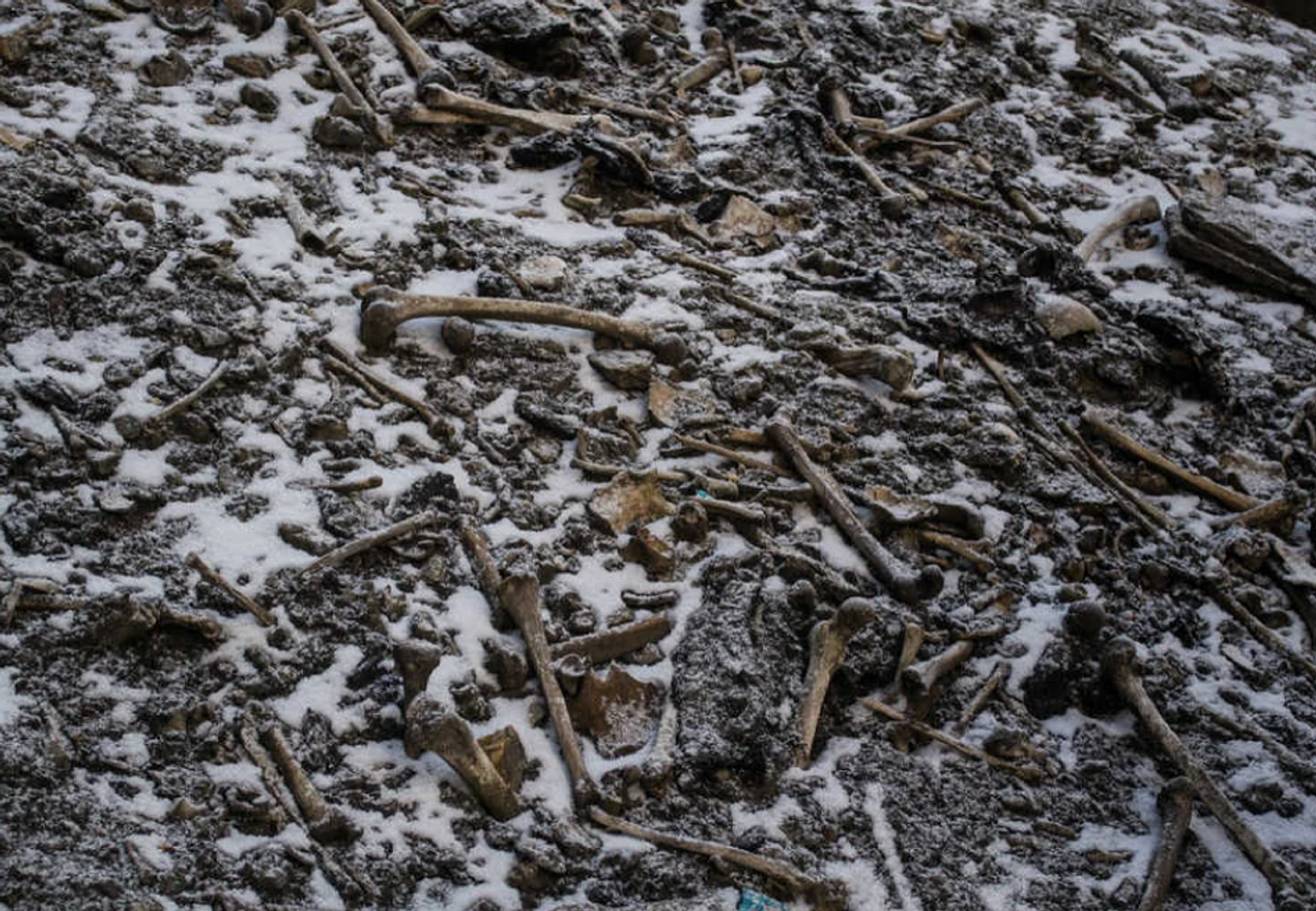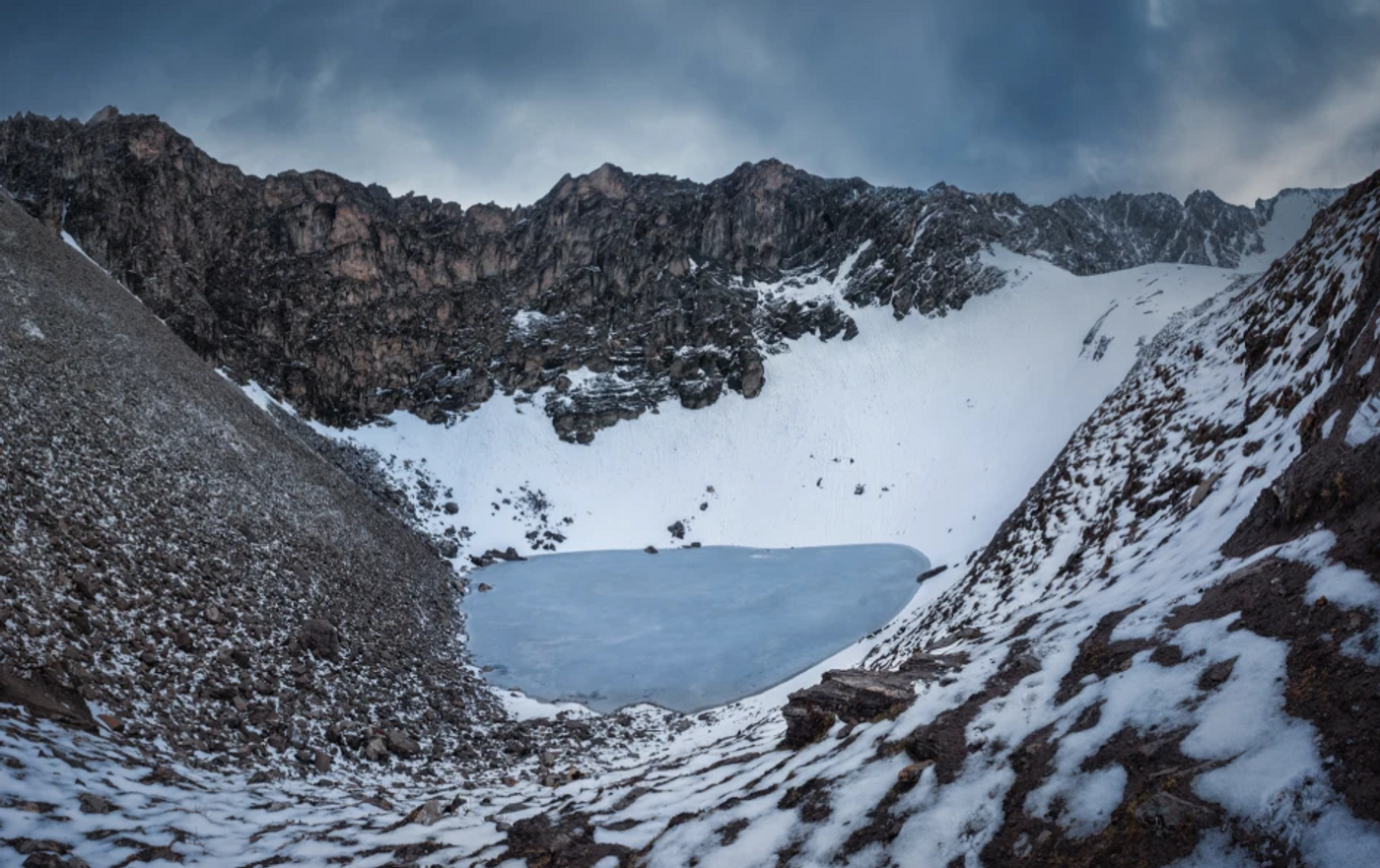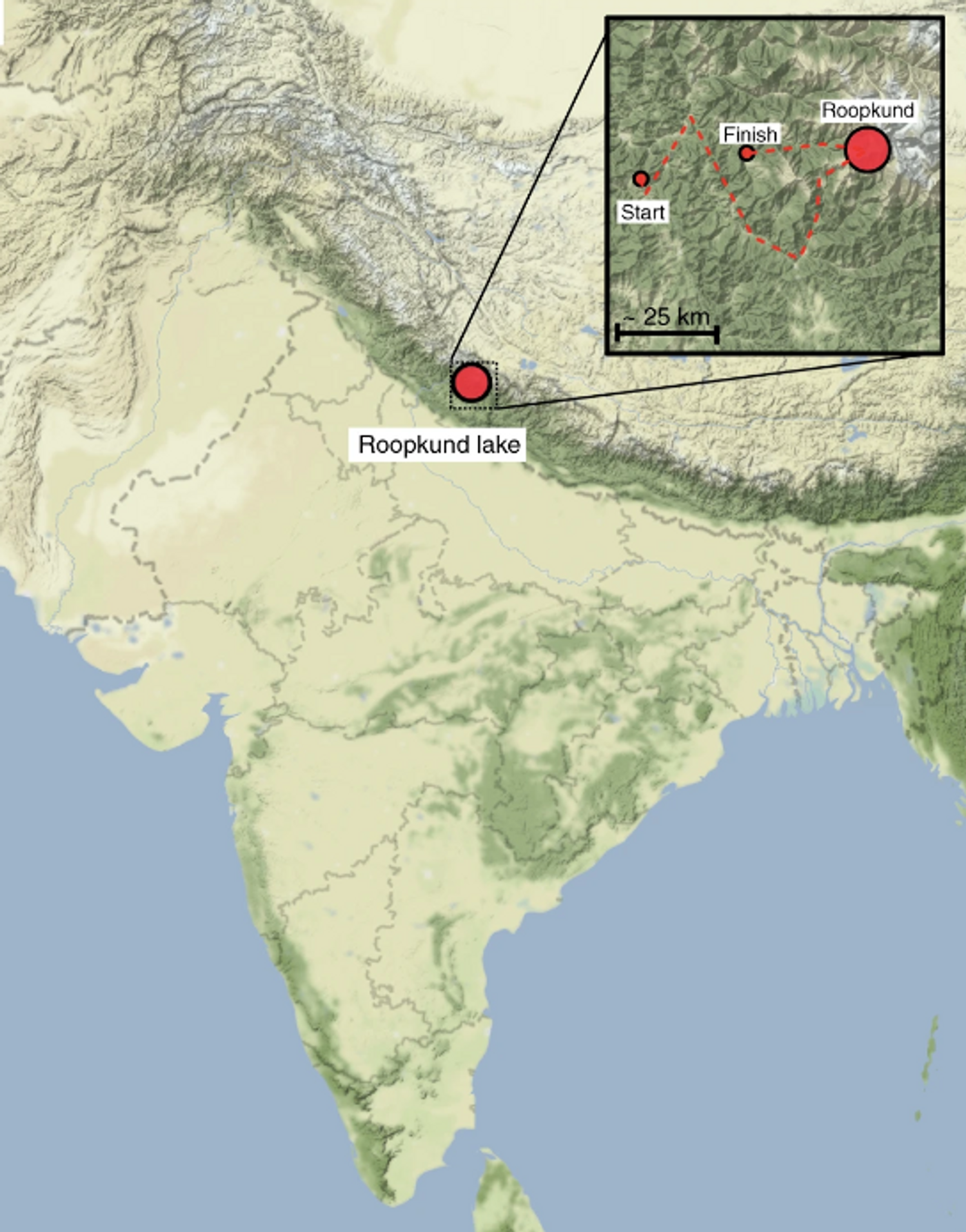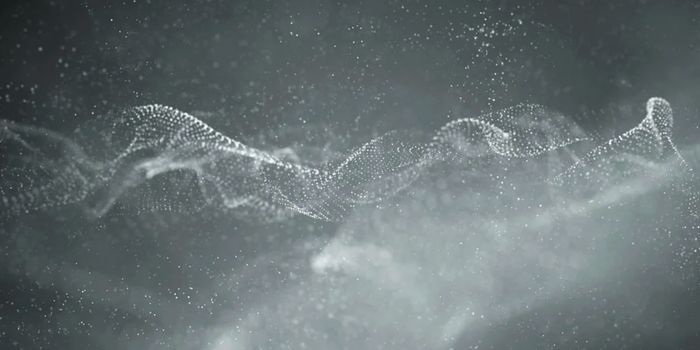DNA Gives Clues to the Mystery of 'Skeleton' Lake
Roopkund Lake is freezing. It sits over 4,785 meters (15,700 feet) above sea level in the Himalayas, and this small body of water is only 40 meters (about 130 feet) in diameter. The place has a legendary reputation, and is sometimes called Skeleton Lake because of the estimated 500 to 800 people that have died there. The remains were discovered in 1942 by an Indian official, and made public in the late 1950s. At the time, it was assumed that traders or soldiers had died there of exposure or disease.
The specimens were finally analyzed with forensics in 2004. That investigation revealed that several people at the site had suffered head injuries that had not healed, and researchers suggested that a serious hail storm had struck these people, who were Indian pilgrims from the 9th century. The theory was believable, because an ancient tradition takes pilgrims on a 12-year trek to Homkund, and Roopkund Lake is on the way there.
But meteorologists doubted the killer giant hail theory. Hail is unlikely to fall at such a high altitude, where there is not sufficient heat, moisture, or the "repeated freeze-thaw, wet-freeze cycles" that are needed generate large hail, explained AccuWeather Senior International Meteorologist Jim Andrews. Soft hail would form in that area of the world, he noted, not hard stuff. Although, since the events may have happened as many as 1,000 years ago, he acknowledged that he can't totally rule out the possibility of killer hail.
Since the people found at the site were in good health, did not show signs of combat, and did not carry weapons but had musical instruments, it seems likely that they were pilgrims that did not die of disease, said Veena Mushrif-Tripathy, professor of archaeology at Deccan College in Pune.
Once genetic technology improved enough to handle the DNA that could be isolated from these old samples, an analysis was done on 38 of the remains. The data told a surprising story, published in 2019 in Nature Communications. These 38 skeletons were from three different, genetically distinct groups of people that ended up at Skeleton Lake in separate events over the course of 1,000 years, an astounding finding for such an inaccessible location.
There were 23 individuals with South Asian ancestry at the site, who died in one or more events between the 7th and 10th centuries A.D. Another 14 samples belonged to a different group of people from Greece and Crete who ended up at the lake about 1,000 years later, probably in one event during the 19th century. Another single sample was from a Southeast Asian individual who died there sometime in the 19th century.
This study has shown that multiple events produced the mass grave at Skeleton Lake, and surprisingly, some of those people were Mediterranean. There does not seem to be any historical explanation for the presence of Greek people in the Himalayas. It seems that while this information is fascinating, it has produced many new questions.
The site is remote, but it has also attracted a lot of attention, disturbing the historical evidence. Those challenges may make this mystery very difficult to fully solve.
Sources: AccuWeather, Nature Communications











